MP Board Solutions Class 9 Science Chapter 3 – Atoms and Molecules
MP Board Solutions for Class 9 Science Chapter 3 – Atoms and Molecules are essential for understanding key Chemistry concepts in the MPBSE curriculum. These well-structured answers help students grasp topics like laws of chemical combination, atomic theory, writing chemical formulas, mole concept, and more. Designed as per the latest syllabus, these solutions strengthen conceptual clarity and improve exam preparation. Ideal for revision and practice, they encourage logical thinking and scientific understanding, making them a valuable study tool for scoring well in Class 9 Science exams.
MP Board Solutions Class 9 Science – Atoms and Molecules – Exercise Images
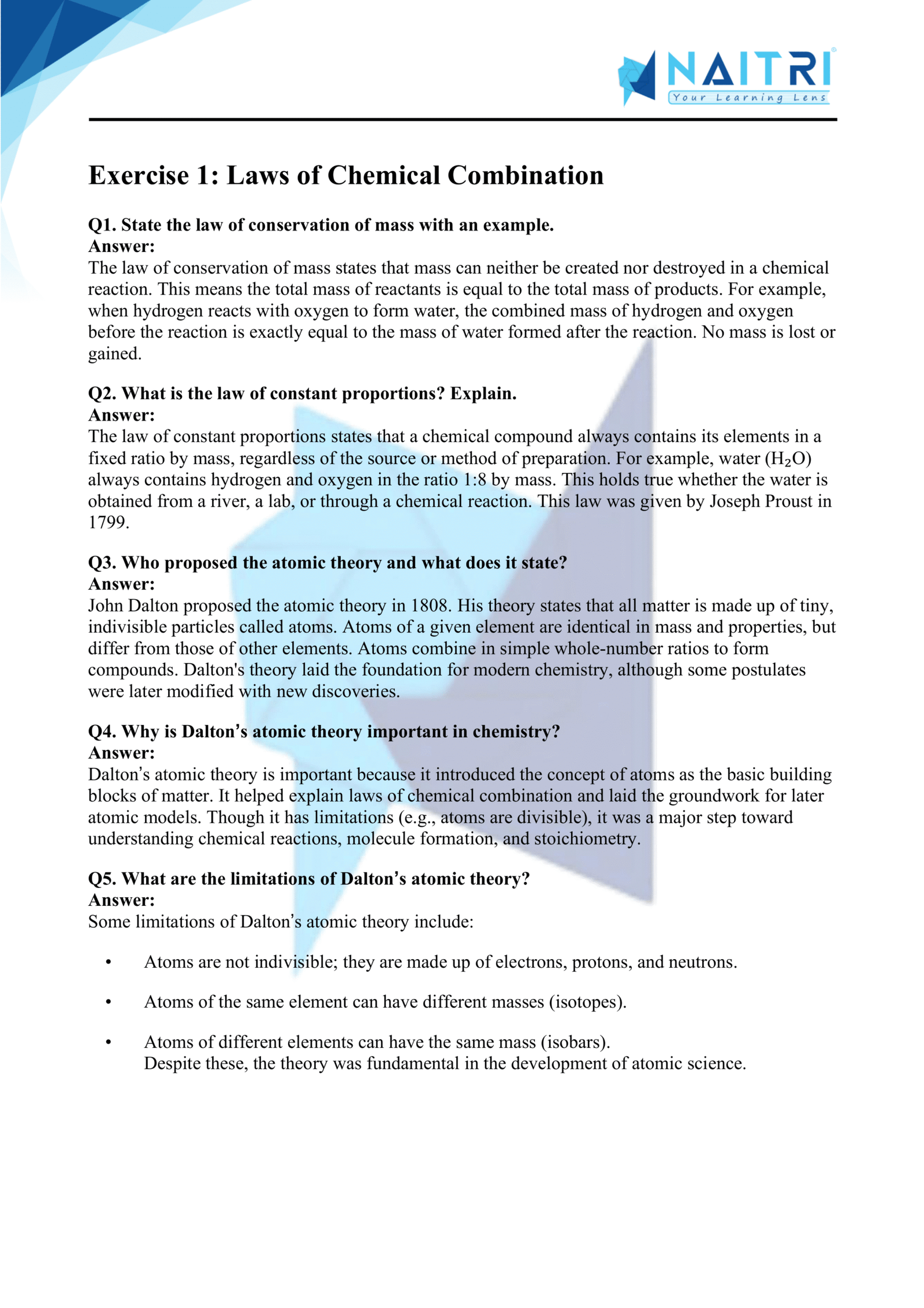
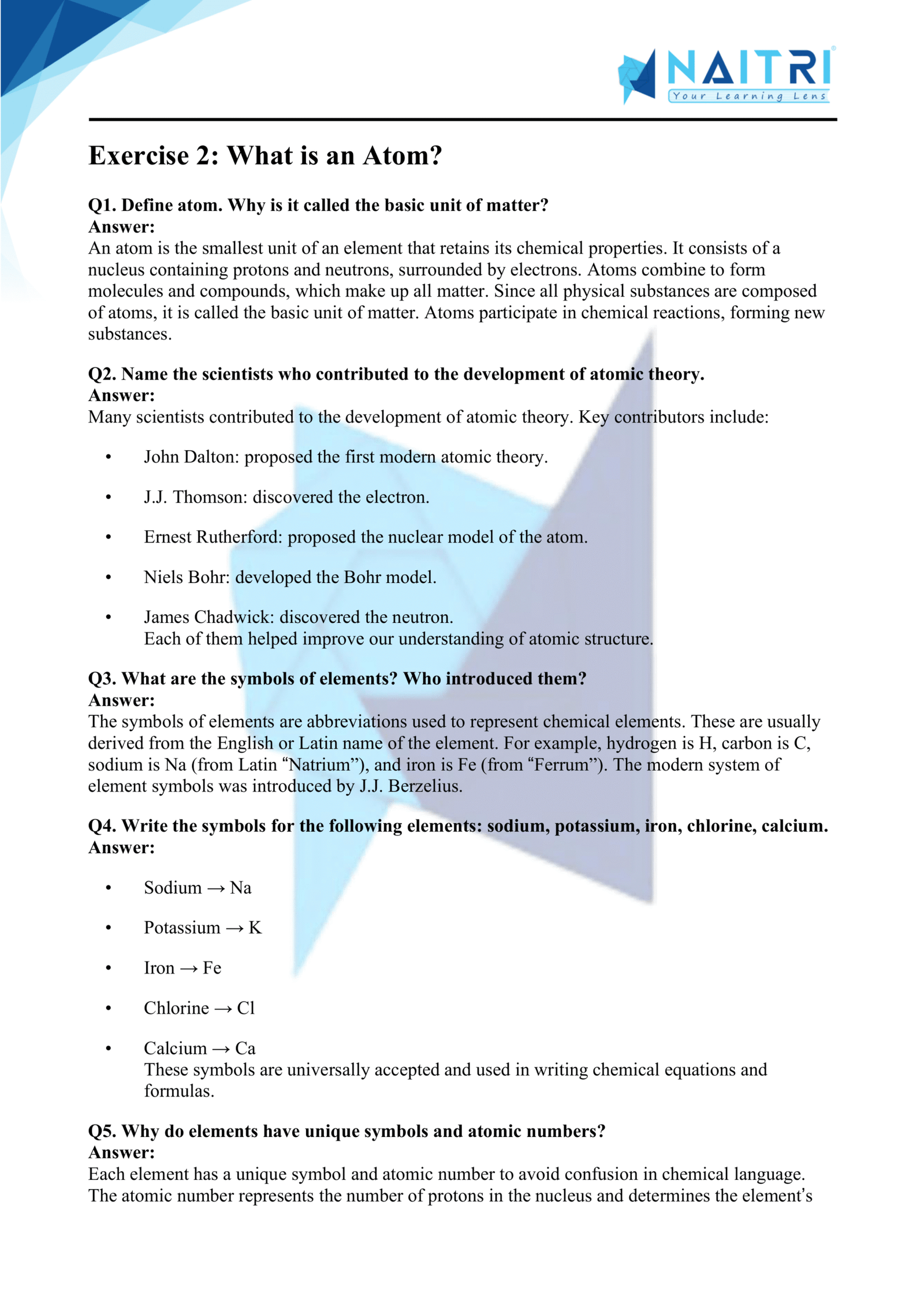
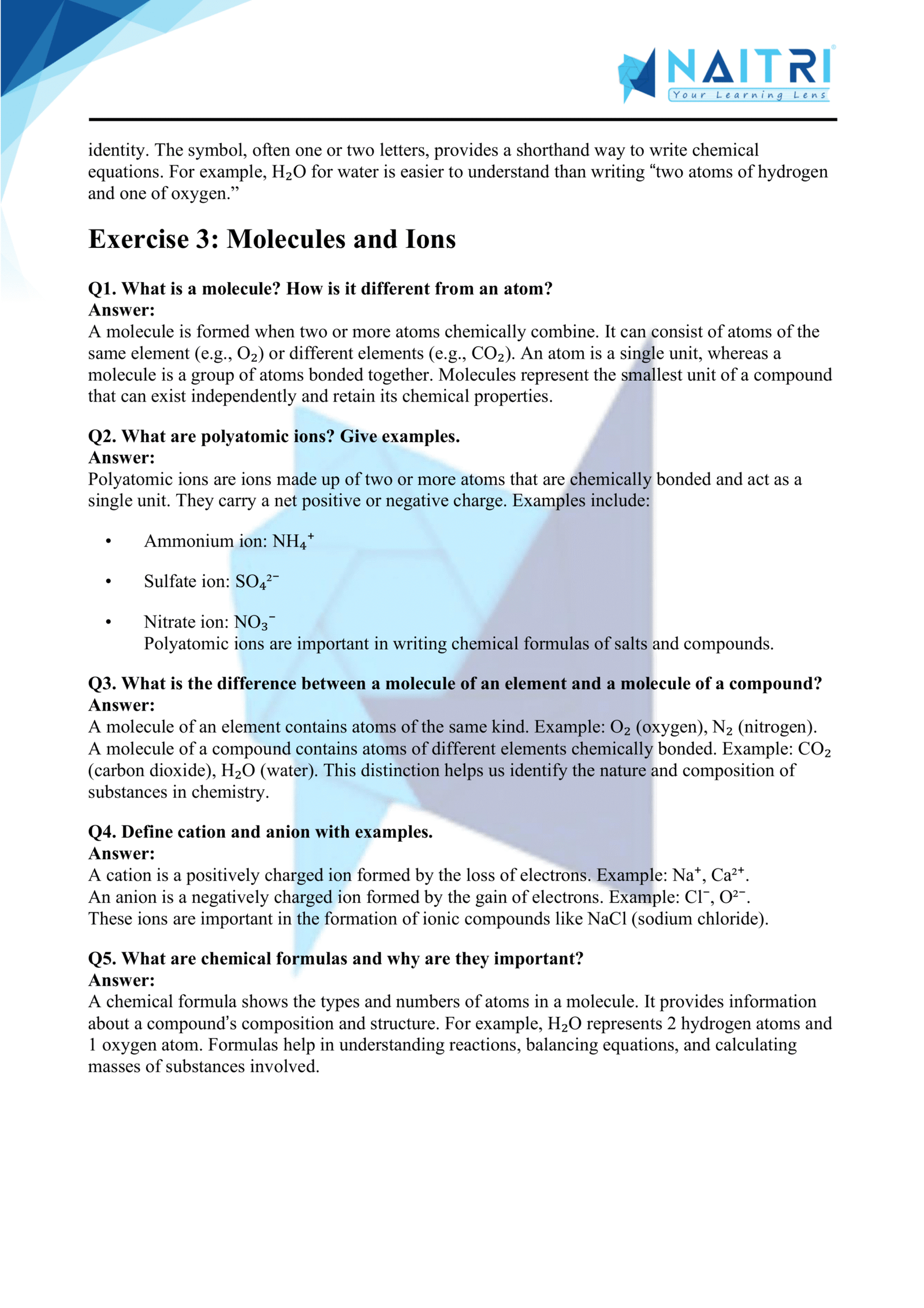
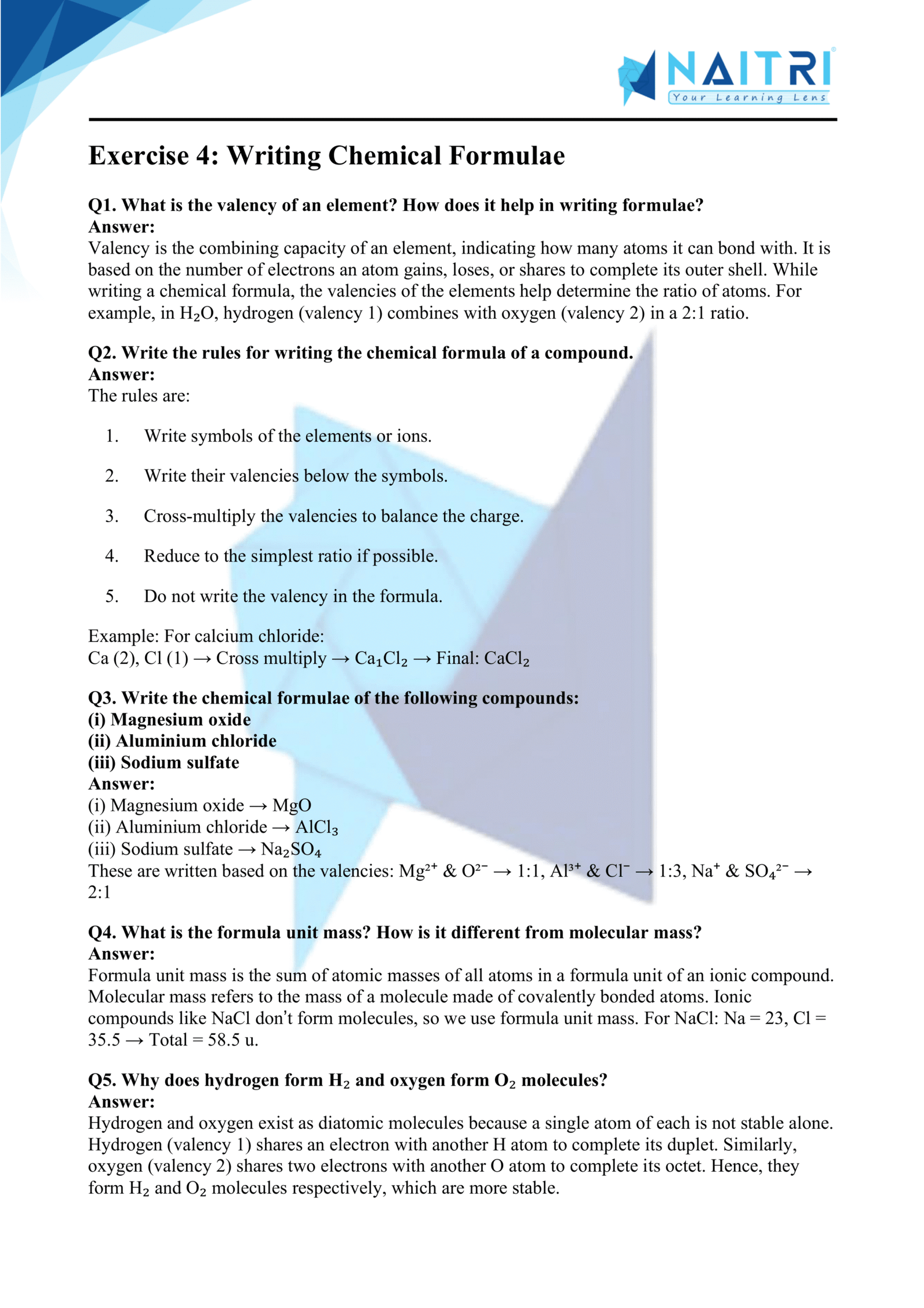
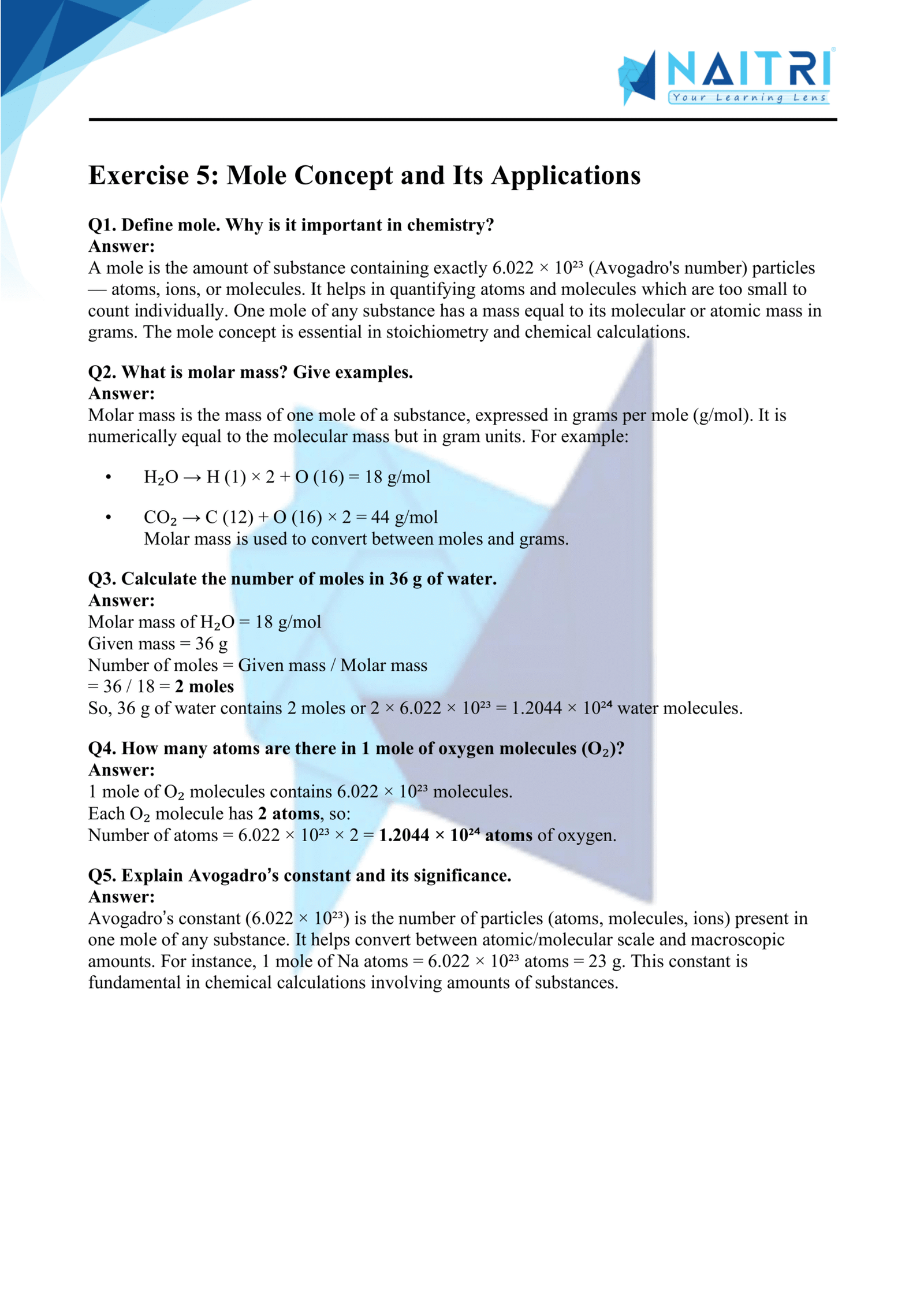
Experience Science Like Never Before – With AR!
Understanding Atoms and Molecules is now more exciting and immersive! With the NAITRI App, you can explore complex science concepts through Augmented Reality (AR). Watch atoms bond, molecules form, and reactions simulate in 3D — right in front of you. Our AR-powered lessons make learning interactive, 3D, and fun, helping you retain concepts better and enjoy every topic.



Visualize . Interact . Understand . The future of learning is here
Atoms and Molecules – Important Questions with Answers
1. Define atom and molecule with one example each.
Answer: An atom is the smallest unit of an element (e.g., O). A molecule is two or more atoms chemically bonded (e.g., H₂O).
2. State any four postulates of Dalton’s atomic theory.
Answer: All matter consists of indivisible atoms; atoms of the same element are identical; compounds form from fixed atom ratios; atoms are rearranged, not created/destroyed in reactions.
3. What is atomicity? Give two examples.
Answer: Number of atoms in a molecule (e.g., N₂ = 2, P₄ = 4).
4. Define valency with examples: O, H, C.
Answer: The combining capacity of an atom (O = 2, H = 1, C = 4).
5. Calculate molecular mass of CO₂.
Answer: 12 + (16 × 2) = 44 u.
6. What is the difference between molar mass and molecular mass?
Answer: Molecular mass is measured in atomic mass units (u); molar mass is grams per mole.
7. Define mole and Avogadro’s number.
Answer: One mole contains 6.022×10²³ particles (Avogadro’s constant).
8. How many molecules are present in 3 moles of O₂?
Answer: 3 × 6.022×10²³ = 1.8066×10²⁴ molecules.
9. Number of atoms in 1 mole of CH₄.
Answer: 5 atoms per molecule → 5 × 6.022×10²³ = 3.011×10²⁴ atoms.
10. Define isotopes with one example.
Answer: Atoms of the same element with different masses, e.g., ¹H & ²H.
11. What are isobars? Give one example.
Answer: Atoms with same mass number but different atomic numbers, e.g., ⁴⁰Ar and ⁴⁰Ca.
12. Define isomers with one example.
Answer: Compounds with same molecular formula but different structures, e.g., ethanol and dimethyl ether.
13. What is the atomic number?
Answer: Number of protons in the nucleus of an atom.
14. What is mass number?
Answer: Total number of protons and neutrons in an atom’s nucleus.
15. Define electron configuration.
Answer: Distribution of electrons in various shells of an atom.
16. Electronic configuration of Neon (Z = 10).
Answer: 2, 8.
17. Electronic configuration of Carbon (Z = 6).
Answer: 2, 4.
18. What is the significance of valence electrons?
Answer: They determine an element’s chemical bonding behavior.
19. What holds atoms together in a molecule?
Answer: Chemical bonds (e.g., ionic, covalent bonds).
20. Define formula unit mass.
Answer: Sum of atomic masses in the simplest ratio of ions in an ionic compound.
21. State law of conservation of mass.
Answer: Mass is neither created nor destroyed in a chemical reaction.
22. State law of definite proportions.
Answer: A compound always contains elements in a fixed ratio by mass.
23. How many oxygen atoms are there in 2 moles of CO₂?
Answer: Each molecule has 2 O atoms → 2 × 2 × 6.022×10²³ = 2.4088×10²⁴ atoms.
24. What is the empirical formula of C₂H₆?
Answer: CH₃ (simplest whole-number ratio).
25. Distinguish between molecule and formula unit.
Answer: Molecule applies to covalent compounds; formula unit applies to ionic compounds.
Atoms and Molecules introduces the smallest units of matter and how they combine to form all substances around us. The chapter covers atomic theory, laws of chemical combination, writing chemical formulas, and the concept of the mole for counting particles. Through this, students learn how everyday substances—like salt, water, or oxygen—are built from atoms. It encourages scientific curiosity and forms a base for chemical calculations used in fields like farming and industry in Madhya Pradesh.
Related Chapters You May Like
Download Naitri App
Easy, Visual Learning — Right on Your Phone
Learn with Augmented Reality! The Naitri app makes CBSE and MP Board concepts interactive and fun — even in low-resource settings. Watch lessons, complete homework, take tests, and track progress — all in one place. Anytime. Anywhere.
Available on








